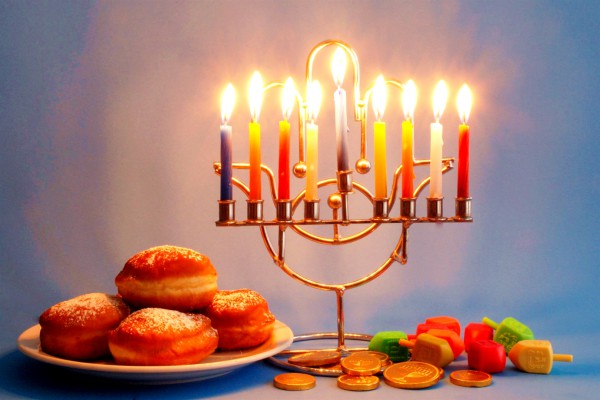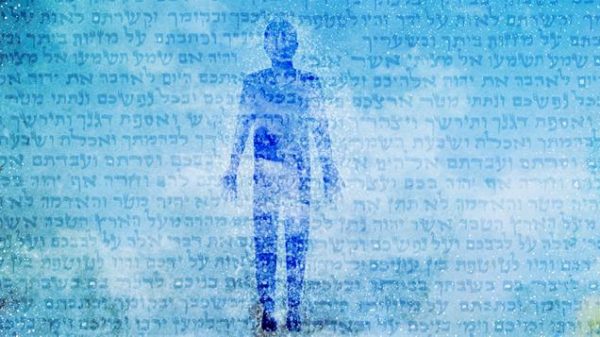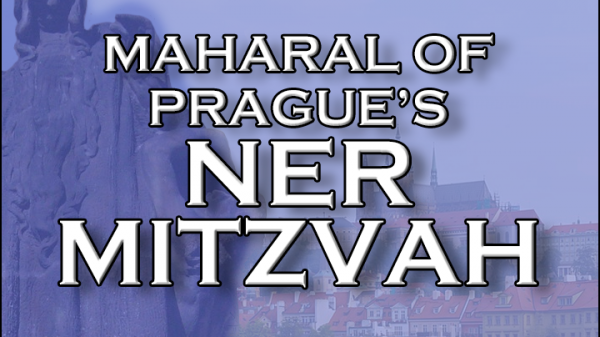Click here to download PDF
Moshe Yishayahu Yirmiyahu
“Eicha” – How can I carry by myself your contentiousness, your burdens and your quarrels” (1:12). This Pasuk is traditionally read with an ‘Eicha tune’ as it is always read before Tisha B’Av. Is there an inherent connection? The Midrash Rabba on Eicha says as follows: “Three prophesized using the word Eicha: Moshe, Yeshayahu and Yirmiyahu. Moshe said, “Eicha – how shall I carry etc.”; Yeshayahu said, “Eicha – how became like a harlot the faithful city” (which is the designated Haftara of this week’s Parsha that we always read before Tisha B’av) and Yirmiyahu said “Eicha – How sat alone….etc.”(book of Eicha). The Midrash continues: “said Rebbi Levi, this is like a princess that had three caretakers. One saw the princess in her state of tranquility; one saw the princess in a state of impulsiveness, and one saw the princess in a state of ‘ugliness’. Moshe saw the Jewish people in their glory and tranquility and said “Eicha – How can I carry you myself….”; Yishayahu saw them in their impulsiveness and said “Eicha – How became like a harlot….”; Yirmiyahu saw them in their state of ‘ugliness’ and said, “Eicha……”
It’s easy to see a connection between the impulsiveness of the Jewish people that Yishayahu laments and the ‘ugliness’ that Yirmiyahu laments, because the impulsiveness in the generation of Yishayahu led to the ‘ugliness’ and destruction in the days of Yirmiyahu, but why is Moshe lamenting? What could possibly be a common denominator between Moshe who sees the Jewish people ‘in their glory and tranquility’ with the impulsiveness and ‘ugliness’ that Yishayau and Yirmiyahu lament?
Kareis & Adam
The Midrash continues: “……. Said Rebbe Levi, the Jews were not exiled until they denied the thirty six sins that are punishable by ‘Kareis’ as ‘Eicha’ has a numerical value of 36….” What is the connection between ‘Kareis’ and the exile?This Midrash continues and says “and Rebbe Nechemia said that the word “Eicha” is none other than lamentation as the Pasuk says, “Hashem called to Adam and told him and said to him “Ayeka” – where are you? Which is spelled exactly the same as ‘Eicha’ which Rebbe Nechemia says to read as an acronym “Oy lecha” – woe to you. What is the connection between the sin of Adam and what Moshe, Yishayahu and Yirmiyahu are lamenting?
Why is Churban HaBayis in Gittin?
It is well known that the place where the Gemara in the Bavli talks the most about the destruction of the Beis HaMikdash, what led up to it and the aftermath is in Maseches Gittin; where we have the laws of divorce. Why would Chazal put the discussion of this horrific topic in the tractate that talks about the seemingly civil affair of divorce? There are two clues to solving this mystery. One is the famous Chazal that says “The ‘Mizbeach’ – alter cries for the one who divorces his first wife” (gittin 90B). Another clue is to be found based on the Midrash above. The Midrash said that the Jewish people were exiled because they denied the thirty-six transgressions that are punishable by Kareis. The Biblical term for the “Get” – bill of divorce is “Sefer Krisus”- a book of severance from the same root as Kareis. Where do these clues lead us?
Kareis
The Rambam makes it clear and wants us to internalize as a principle of faith (see Rambam Hilchos Teshuva 8:5 and the Rambam’s 13 principles of faith that he presents in his monumental introduction to Perek Chelek in Maseches Sanhedrin. The 11th principle) that the greatest retribution for transgressing the commandments of the Torah is Kareis. What makes Kareis the worst punishment even more than Gehinom? The Rambam defines “Kareis” as to erase the transgressor from reality. The Rambam wanted us to be aware of how the Torah makes an absolute difference. If we keep the Torah, it grants us the only absolute existence possible for us, which is clinging to Hashem in Olam HaBa. Transgressing the Torah could make the ultimate difference for the transgressor as he is totally deleted from reality. The Nefesh HaChaim (shaar Alef chap 18) explains the mechanics of how that is done. The Nefesh HaChaim points out that you will always find the term Kareis in the context of the level of soul called Nefesh: “Venichresa Hanefesh Hahi” or, “Venichresu Hanefashos HaOsos”. The Nefesh is the lowest level of the five levels of soul: Nefesh, Ruach, Neshama, Chaya and Yechida (see more on this in Even Shesiya Chayei Sarah 5779). The Nefesh is the aspect that is called ‘shitufa d’gufa’ – the partner of the body, as it is the level of soul that inhabits the body and is intertwined with it. The Ruach’s lowest aspect is connected to the Nefesh in the body but its higher aspect is connected to the Neshama, which is beyond the body, as are the even higher levels of Chaya and Yechida. In “Kareis” – the severance, the Nefesh is cut off from the Ruach and the Nefesh will go down with the body, severed from the other levels of soul. This is enough to delete a person from reality because all that we do and are rewarded and punished for is a partnership between body and soul. This is the secret behind the dialogue between Antoninus and Rebbe (Sanhedrin 91) Antoninus wanted to claim that body and soul can escape Divine judgment by blaming the sin perpetrated on each other, saying “I didn’t do it – He did it!”. Rebbe gave the famous metaphor of the blind able-bodied person (alluding to the body) being guided by the lame-sighted person on his shoulders (alluding to the soul), to commit the caper of stealing from the King’s orchard together. Each one blamed the other and said, I couldn’t have possibly done the crime, I am blind and the other one said, I couldn’t have possibly done it because I’m lame. The king said, get on his shoulders and I will judge you as one person. So also, Hashem judges the body and the soul as one integrated unit. Our identity is not body and not soul. Our identity is the unique composite being that is man. That is the secret that the power of free will that is our unique ability to choose and deserve reward or punishment only exists when you have the body and the soul together. Therefore, just severing the Nefesh that inhabits the body from the parts of soul that are above the body is more than enough to delete this person’s identity from reality.
Marriage & Divorce
We have explained at great length (Even Shesiya Chayei Sara 5778) that the relationship of the integrated unit of man and woman, as “one flesh” and “He called “them” Adam” is a body-soul relationship (Zohar, Chayei Sara). As we explained, this is what Chazal allude to in the halachic principle of “Ishto KeGufo” – his wife is like his body, meaning to say be contrast that he is her soul. Similarly, Chazal say: “The righteous woman does the will of her husband” (Tana d’Bei Eliyahu chap 9). That is the relationship the body has to the soul; as the righteous body does what the soul wants. With this we can understand how horrible a needless divorce is. It is the Kareis of the integrated unit of man and wife as one being. My Rebbe, Maran HaGaon HaRav Yaakov Weinberg, zt’l the Rosh Yeshiva of Ner Yisrael used to sum it up that in Judaism, divorce is not to dissolve a partnership, it is amputation of living flesh. Thus, the term, “Sefer Krisus”-book of severance is so fitting to describe the tragedy of a divorce.
The National Scale
As is well known, and it is the theme of the whole book of Shir HaShirim, that the Jewish people and Hashem are like married to each other and the Beis HaMikdash is their home and the destruction of the Beis HaMikdash is both literally and figuratively a broken home, with Golus exile being likened to divorce (See Rashi on the first Pasuk on Eicha – Yoma 86B and many other P’sukim in Tanach). This alone would be reason enough to understand why the Agadatas on Churban HaBayis are in Gittin. But it goes deeper than that. Hashem is everywhere, equally and indivisible. However, His revelation is special for the Jewish people and for the land of Israel in general and the Beis HaMikdash in particular. Hashem’s revelation in this world is carried by the Jewish people the way a soul is carried by a body. The level called “Shechina” that literally dwells amongst us as a people and is revealed in the Beis HaMikdash is parallel to our national Nefesh that inhabits the body. The higher level of national soul that is parallel to the Ruach, which is on the one hand connected to the Nefesh in the body and on the other hand, is connected to the other levels of soul in the heaven, is called ‘Kudsha Brich Hu’ – (there are obviously levels of Divine revelation parallel to Neshama, Chaya and Yechida but it is not necessary to delve into for the purpose of our discussion). When all these levels are in place, we have an open lifeline between us and Hashem. This is the alignment that we pray for before performing any Mitzvah in the “L’shem Yichud”, we pray for the sake of the unification of “Kudsha Brich Hu and His Shechinah”. This alignment is properly in place when the Beis HaMikdash is standing and the Shechinah is revealed there and this is alluded to in the final stanza of Kah Ribon that we sing in Shabbos Zemiros, “To Your Beis HaMidash return and the Holy of Holies, the place where the Nefesh and Ruach are united”.
National Kareis
With all these principles, we can understand what the Nefesh Hachaim (Shaar Alef chap 19) says that Golus is national Kareis because the level called “Shechinah” has been severed from “Kudsha Brich hu”, like a Nefesh severed from a Ruach and that is why we find the term in the Zohar “Shechinta Bgalusa” – the Shechinah per se is in exile, or “Shechinta B’Afra” – the Shechinah is in the dust. Or in the words of the Gemara (megillah 29) “when the Jews went into Golus, the Shechinah went into exile with them”. The Shechinah is like the Nefesh, severed from the Ruach.
Severing the Lifeline
We now understand the correlation between Kareis and Golus and the significance that Eicha has the numerical value of thirty-six, the number of transgressions punishable by Kareis. Eicha refers to all the times a connection to Hashem or the Torah, which is called the tree of life, has been severed. Going in historical order, when Adam did the opposite of meriting to eat from the tree of life and ate from the Eitz HaDaas instead, it actually severed his connection to life and brought death to the world. It severed his potential connection to Torah by changing his mentality of perceiving truth vs falsehood to a lower level of just perceiving desirable versus non-desirable which barred him from the tree of life, which was revealed as the Torah twenty-six generations later. We can now appreciate why asides from his being exiled (Golus) from Eden he also separated from Chava for 130 years. He was experiencing Kareis and Krisus on all levels (until 130 years later when he merited a partial restoration, reconciled with Chava and was able to beget Shes, in his Divine image).
Moshe Yishayahu & Yirmiyahu
In the days of Moshe, where the Jews were in their glory and tranquility, there was a subtle severance from Moshe who is the prime carrier of the Torah, which is called “our life” and it is the essence of our connection to Hashem. As Rashi says (1:14) Moshe was disappointed with the Jewish people that they were happy to accept the appointment of judges. Even though it was not only a good idea on Yisro’s part to best administer the nation, it was also endorsed by Divine command. Nonetheless, the Jewish people should have wanted to reject it and insist on receiving all Torah and all judgements directly from Moshe. As Rashi further explains, they were happy to have other judges that can be bought and bribed. That subtle disconnect from Moshe, the source of Torah was what he was lamenting, Eicha – they were glad to have a break in their connection to Moshe, the source of Torah and that break in connection is a Kareis that is truly lamentable because they wanted it. Later in history, in the days of Yishayahu, it’s called that the Jewish people were impulsive. Impulsive is when acting without sound judgement – it is to be severed from the moral conscience. Their actions were called to like be like a harlot, which is called a Sota, which means, to deviate (severance) but Chazal say it is to act as a Shoteh (fool), cut off from your better judgment. The severance from good judgement leads to the actual severance from Hashem and our homeland, which is the severance mourned by Yirmiyahu.
Hope & Yearning
There is hope, parallel to the way the individual can get out of Kareis, if he does Teshuva, is how the nation can get itself out of exile. The Nefesh Hachaim (Shaar Alef chap 18) explains that Hashem in His mercy, does not allow Kareis to sever the entirety of the Nefesh. The highest part of Nefesh which is called the “crown of the Nefesh” is inextricably bound up with the lowest aspect of Ruach that is called the “kingdom of the Ruach”. The highest part of the Nefesh is a person’s will and that’s alluded to in the word Nefesh itself, like ‘the Gemara’s term, ‘Mimah Nafshach’ – either way you want. A the Gemara says, “Ribono Shel Olam, you know we really want to do Your will, but the Yetzer Hara and the Golus gets in the way”. With this the Nefesh HaChaim explains the famous Rambam in (ironically) the laws of divorce that when a person is obligated by halacha to divorce his wife but refuses to do so, the Beis Din may appoint someone to beat him until he consents to do so and it’s called genuine consent because deep down, the Jew wants to do what the Halacha says. The Nefesh Hachaim explains the metaphysics behind this Rambam: It’s because the highest aspect of the Nefesh which is the will is never severed off from the Heavenly aspect of Ruach. A Jew’s will is always in the right place and this is the secret behind the “pintele yid”, discussed in Seforim. With the will to do Teshuva that “crown of the Nefesh” could summon all the fallen parts to come back and restore the lifeline.
Getting out of Golus
The Nefesh Hachaim only addressed the mechanics in the individual but it is obvious that it is true for the nation also. This is the secret behind that we have to yearn for Mashiach and await him with great anticipation constantly. This is the secret why they ask every Jew when he goes up to Heaven and is judged ‘tzipisa l’yeshua’ – did you anticipate salvation? (Shabbos 31A). The Kuzari ends his book that the Geula will only come when we genuinely yearn for it, as the Pasuk says, “you shall arise and have mercy on Zion for the time has come because your servants desire its stones and dust.” This is the secret behind what Chazal say that someone who genuinely mourns Yerushalayim will merit to see it in its joyous state. The mourning of Tisha B’Av is to awaken a genuine desire for the Shechinah to be restored in its rightful place in the Beis HaMikdash and the Jewish people will follow it to their homeland and Hashem will be King over the whole earth, speedily in our days.









